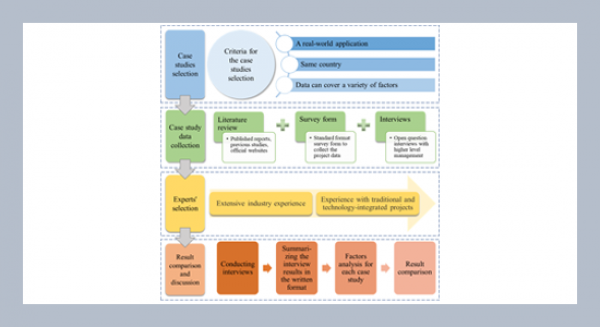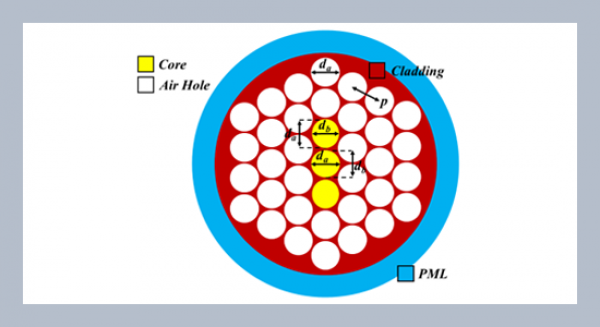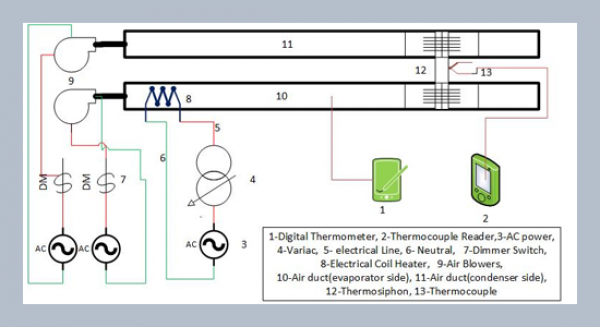K. Phaneendraa*, K. Madhu Lathab, and Y. N. Reddyb aDepartment of Mathematics, University College of Science, Saifabad, Osmania University, Hyderabad, Telangana, India
bDepartment of Mathematics, National Institute of Technology, Warangal, Telangana, India
Download Citation:
|
Download PDF
In this paper, an exponentially fitted arithmetic average difference scheme is proposed to solve singularly perturbed differential equations with dual layer behaviour. In this method, we have extended the arithmetic average finite difference method to the second order singularly perturbed two-point boundary value problem. We have introduced a fitting factor in a three point arithmetic average discretization for the given problem which takes care of the rapid changes that occur in the boundary layers due to the perturbation parameter. This fitting factor is obtained from the asymptotic approximate solution of singular perturbations. The discrete invariant imbedding algorithm is used to solve the tridiagonal system of the fitted method. Maximum absolute errors of the several numerical examples are presented to illustrate the proposed method.ABSTRACT
Keywords:
Singular perturbation problems; dual layer; three-point arithmetic average discretization; boundary layer; fitting factor
Share this article with your colleagues
[1] Bellman, R. 1964. “Perturbation Techniques in Mathematics, Physics and Engineering”, Holt, Rinehart, Winston, New York.REFERENCES
[2] Bender, C. M. and Orszag, S. A. 1978. “Advanced Mathematical Methods for Scientists and Engineers”, McGraw-Hill, New York.
[3] Kevorkian, J. and Cole, J. D. 1981. “Perturbation Methods in Applied Mathematics”, Springer- Verlag, New York.
[4] Nayfeh, A. H. 1981. “Introduction to Perturbation Techniques”, Wiley, New York.
[5] Nayfeh, A. H. 1985. “Problems in Perturbation”, Wiley, New York.
[6] O’Malley, R. E. 1974. “Introduction to Singular Perturbations”, Academic Press, New York.
[7] Pearson, C. E. 1968. On a differential equation of boundary layer type, Journal of Mathematics and Physics, 47, 1: 134-154.
[8] Smith, D. R. 1985. “Singular Perturbation Theory – An Introduction with applications”, Cambridge University Press, Cambridge.
[9] Kadalbajoo, M. K. and Reddy, Y. N. 1989. Asymptotic and numerical analysis of singular perturbation problems: A survey, Applied Mathematics and Computation, 30, 3: 223-259.
[10] Kadalbajoo, M. K. and Patidar, K. C. 2002. A survey of numerical techniques for solving singularly perturbed ordinary differential equations, Applied Mathematics and Computation, 130, 2: 457-510.
[11] Farrell, P. A. 1988. Sufficient conditions for the uniform convergence of a difference scheme for a singularly perturbed turning point problem, SIAM Journal on Numerical Analysis, 25, 3: 618–643.
[12] Natesan, S. and Ramanujam, N. 1998. A computational method for solving singularly perturbed turning point problems exhibiting twin boundary layers, Applied Mathematics and Computation, 93, 2-3: 259–275.
[13] Natesan, S., Jayakumar, J., and Vigo-Aguiar, J. 2003. Parameter uniform numerical method for singularly perturbed turning point problems exhibiting boundary layers, Journal of Computational and Applied Mathematics, 158, 1: 121-134.
[14] Miller, J. J. H, O’Riordan, E., and Shishkin, G. I. 1996. “Fitted Numerical Methods for Singular Perturbation Problems”, World Scientific, River Edge, NJ.
[15] Phaneendra, K., Chakravarthy, P. P., and Reddy, Y. N. 2010. A fitted Numerov method for singular perturbation problems exhibiting twin layers, Applied Mathematics & Information Sciences, 4, 3: 341-352.
[16] Doolan, E. P., Miller, J. J. H., and Schilders, W. H. A. 1980. “Uniform Numerical Methods for problems with Initial and Boundary Layers”, Boole Press, Dublin.
[17] Chawla, M. M. and Shivakumar, P. N. 1996. An efficient finite difference method for two-point boundary value problems, Neural, Parallel & Scientific Computations, 4, 3: 387-396.
ARTICLE INFORMATION
Received:
2013-05-15
Revised:
2015-03-20
Accepted:
2015-05-25
Available Online:
2015-09-01
Phaneendra, K., Latha, K.M., Reddy, Y.N. 2015. A fitted arithmetic average Three–Point finite difference method for singularly perturbed Two–Point boundary value problems with dual layers. International Journal of Applied Science and Engineering, 13, 205–216. https://doi.org/10.6703/IJASE.2015.13(3).205
Cite this article:















